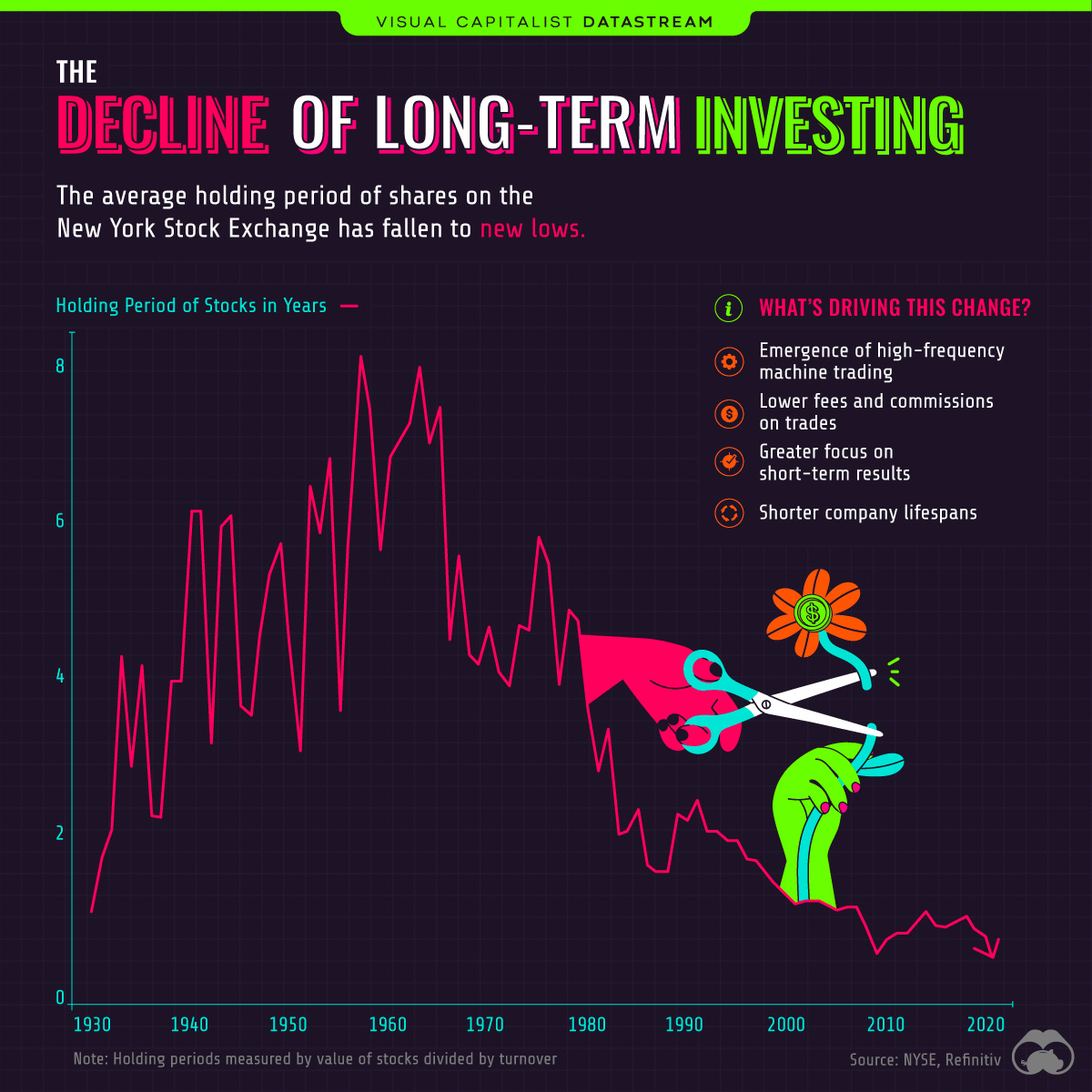What can issuers do about the development of shareholder churn?
Introduction
Legend states that if you whisper ‘churn’ three times in front of a TV displaying a subscription service, a Netflix Representative appears (ta-dum) to recoup the lost revenue associated with displaced customer loyalty.
Churn is one of the key pillars of client retention in any industry, but especially those in the subscription service space. It represents the rate at which customers cease using a company’s products, which adversely affects profitability and impedes growth. Average churn rates differ between industries but are a key focus for all companies looking to understand their customers and the decisions they make.
What is Shareholder Churn?
Shareholder churn refers to investment turnover, where investors exit positions in companies to move on to other offerings. Shareholder churn is on the rise in the business world, with the average hold time for investments plummeting in a near frictionless landscape, exacerbated by volatile and rapidly changing market conditions.

From a shareholder perspective, it’s never been easier to churn from an investment, as traditional barriers to entry and exit (brokerage, fees, asymmetric information, and ease of access) have been bridged by technology and globalised access to resource-pooled communities of like-minded investors.
How Does this Affect Companies?
This ease of churning has substantially reduced the time from where the shareholder decides to churn to when they actually churn (time-to-churn) to effectively zero. When a shareholder makes this decision, they can almost instantly close out their position, and companies have very little influence at this point in the shareholder lifecycle.
If a company is fortunate, the shareholder will only downgrade their position, which provides a small window of opportunity for re-engagement to avoid churn. This lack of shareholder commitment:
- Presents funding uncertainty for capital raises
- Destabilises the share price
- Pressures management to prioritise short-term results
Implications for Companies?
When a shareholder has reached the point of churning, it is very difficult to influence their decision (given how the delay between decision and action is effectively zero). Therefore the best approach that a company can take is to be proactive and comprehensive with its investor relations strategy and focus on turning “traders” into “shareholders”.
In this analogy, “shareholders” are long-term investors who are typically not just financially committed, but also have a strong emotional commitment to seeing the company succeed. This is usually due to the time they’ve invested in researching the company, its competitors, and the opportunity.
In other words, the modern-day retail trader is more like a mercenary, ready to take profits or cut losses at the first sign of trouble. In order to turn traders into shareholders, steps need to be taken by the company early in the shareholder lifecycle.
What can Companies do?
The goal is to build investor sentiment and respond to behaviour, and in doing so, issuers have a systemic way of growing shareholder conviction.
Providing shareholders with the tools to communicate with the company directly gives them an outlet to voice concerns, raise questions, and directly learn about the company which disincentivizes short-term churning decisions through the establishment of shareholder commitment.
Shareholders may churn, but stakeholders rarely do. Turn your shareholders into stakeholders and see how your long-term outlook improves.
